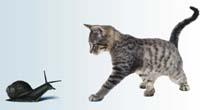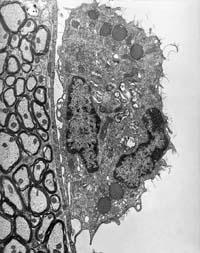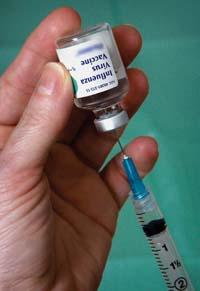Attack strangers or protect their own?
2007/04/01 Lakar Iraizoz, Oihane - Elhuyar Zientzia Iturria: Elhuyar aldizkaria

In animal evolution, two main types of immunity, own and acquired, have been developed. It acts on any pathogen quickly and generally without specificity. The capture, on the other hand, develops a specific aggression against each infection, the antibody, which stores them for the subsequent introduction of the same pathogen in the body.
All animals have an own immune system, while the acquired one is exclusive of vertebrates. The benefit of the immune system adopted on vertebrates is not very clear to researchers. Many believe that vertebrates are more resistant to pathogenic microbes because they have an additional immune system. Margaret McFall-Ngai, a researcher at the University of Wisconsin, has launched a proposal that opposes this idea. He has written an article saying that vertebrates are no more resistant to infections, since they are not healthier than invertebrates and do not suffer less infections than invertebrates. In his opinion, the adopted immune system fulfills a more important function of knowing and protecting beneficial microbes for vertebrates than of attacking harmful microbes.
Microbes in animals
To say if a microbe is pathogenic or beneficial to a certain living being is not easy, it is not possible to establish a clear limit between the two. Some are beneficial and other pathogens. There are neither benefits nor harmless, and others are beneficial while remaining in a limited amount, but if they grow in excess they can become harmful.
All animals have microbes in their body. Some of these microbes coexist with the animal and others remain alone for a time. The microbial community that lives with the animal is called microbiota.

The microbes that make up the community are not harmful to the animal, at least in normal quantities. Moreover, in normal conditions, the relationship between the animal and the microbiota is mutualist, that is, when all the participants meet they benefit: the microbes get an ideal environment to live from the host, and the hosteleros can obtain from the microbes, above all, certain foods and protect themselves in part from the infections produced by the microbes.
Immunity of vertebrates
Although all animals have microbiota, there is a great difference between vertebrates and microbial communities of invertebrates. Vertebrates have a very complex microbiota. There are thousands of species of bacteria distributed in the skin, mouth and intestine, with populations superior to the billion. The individual microbiota is usually quite stable, each individual maintains its microbial composition approximately constant.
McFall-Ngai believes this stability is guaranteed by an adopted immune system. As he explained, in microbial communities the species live in a confrontation, trying to impose themselves among them. Vertebrates have such a complex community in which microbes resist excessive growth and maintain a certain balance between all. In addition, non-microbial species, such as pathogenic microbes, make it difficult to grow. But if something breaks that balance, the immune system gets underway to return the community to balance.
Immunity of invertebrates
The case of invertebrates is very different. They may contain dozens of microbial species in the intestine, but less than eight are part of the microbio of the organism. Therefore, in invertebrates, strange microbes predominate, which often have an invasion of new microbes. In order to maintain foreign microbes in a limited number, invertebrates use their own immune system (as they investigate this immune system, they are found to be more complex than expected and sometimes develop a specific attack against pathogens).

To prevent the intrinsic immune system from damaging the microbe, invertebrates protect the microbiota. The researchers do not know them very well, but have identified three possible protection strategies.
In some invertebrate species it has been observed that animals store within cells 1-3 beneficial microbes species for them, except for the attack of the own immune system. Other times they have seen that the hostelero physically isolates the microbiota through a lid made with some compound like chitsin. In the third identified strategy, it has been detected that sometimes the own immune system is able to recognize some components of the invertebrate microbiota.
These microbial protection strategies do not appear in vertebrates. McFall-Ngai believes this means that vertebrates have another microbial protection strategy, the adopted immune system. In addition, it considers that the latest technological advances will allow to check whether this idea is correct or not.

Gai honi buruzko eduki gehiago
Elhuyarrek garatutako teknologia



